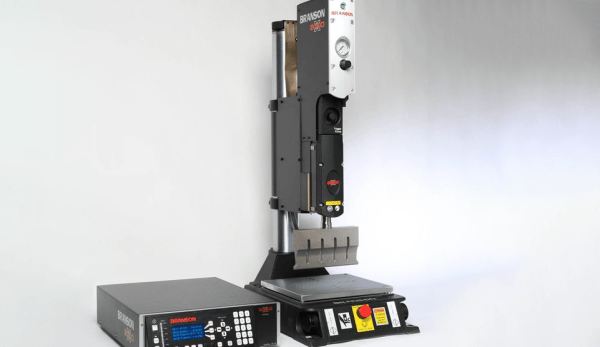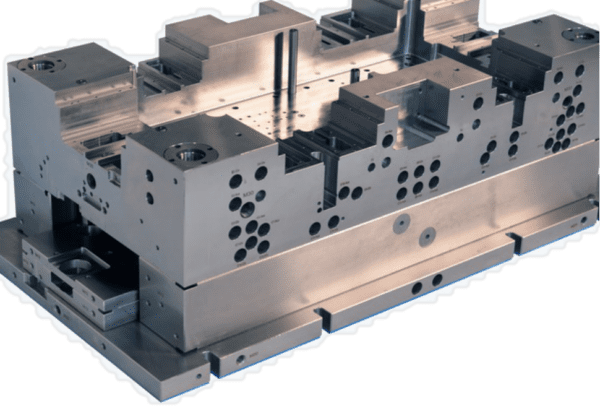
Ultrasonic Welding Advances Drive Bio-Based Packaging Applications Forward
Emerson, along with its BransonTM plastic welding systems, is helping packaging manufacturers and marketers contribute to the circular economy through the increased use of bio-based plastics (BBP) and biodegradable and compostable plastics (BDCP) in packaging.
As environmental-protection concerns have mounted in recent years, government regulators, led by the European Union’s (EU) Circular Economy Action Plan, have begun to look beyond simply reducing the use of fossil-derived resins and increasing recycling rates. Aiming to help the world’s most iconic brands — including Mars, Nestle, Walmart, SC Johnson, Unilever, Colgate-Palmolive, Apple, Coca-Cola, Johnson & Johnson, PepsiCo and many more — deliver more sustainable packaging, developers are getting behind these initiatives and looking at alternative materials.
However, the increased use of bio-based materials poses new challenges because these plastics contain less polymer, process at lower temperatures, and have a “narrower” processing window. For Emerson, which provides joining technology used in plastics packaging — bags, pouches, clamshells, cartons, coffee canisters, caps, filters, seals and more — barriers like these have sparked several recent innovations. Together with resin makers and packaging manufacturers, Emerson is working to adapt the joining technology employed with more traditional plastics and deliver commercial-grade performance with new and rapidly evolving bio-based materials.
Conventional thermal equipment, which is still widely employed in packaging systems, compresses opposing plastic layers together between heated bars to create the seals that hold and protect packaged goods. By controlling three simple factors — temperature, pressure and dwell time — these systems have been able to provide the process control and repeatability the market requires when using most common polymers. However, when working with BBP, it can be very difficult for package producers using traditional thermal seals to hit the “sweet spot” essential for repeatable package strength and performance.
As a result, more packaging-machine builders are offering — and packaging manufacturers are considering — ultrasonic plastic welding. Ultrasonic welding not only offers far more sensitive and responsive process control but also generates heat to create the seal in a much different way. Thermal sealers drive high heat from the outside in, through the plastic layers. Ultrasonic welders use high-frequency vibration to create frictional heat within the plastic-to-plastic interface. This “inside-out” melt seal focuses heat at the seal interface — where it is needed most. Further, the ultrasonic process delivers energy savings of 25% to 75%, relative to thermal sealing equipment, because it consumes energy only during repeated, brief weld cycles (< 1 sec), while thermal sealing bars consume energy to maintain surface temperature whether they are sealing or not.
The ultrasonic welding process also allows for multiple modes of digital, closed-loop control, with process data collection, to enable precise control of every weld input and quality parameter. Energy input is controlled to the joule and compressive downforce to the Newton. With weld tooling resonating at an exact frequency (in Hz), micron-scale adjustments in amplitude can be used to digitally fine-tune the heat generated at the seal interface to avoid damaging the more sensitive bio-based polymers. Users also have the ability to monitor process parameters in real time, set high/low limits on weld results, and configure alarms that flag weld cycles in which conditions fall outside process limits. Because these alarms are latchable, they enable automated bad-part processing and data logging.
Comparing package sealing process controls
Thermal sealing controls
- Temperature setting
- Pressure setting
- Dwell (time) setting
Ultrasonic welding controls
- Operating frequency
- Tool amplitude
- Welding modes — time, energy, depth, peak power
- Pressure (downforce), velocity, hold time
- Real time data acquisition for QA, setting reject limits, product traceability
Worldwide, manufacturers and packagers are responding to the challenges of sustainability by adopting bio-based plastic packaging for a growing range of products. These include compostable coffee pods, standup pouches and bags, sustainable VFFS (vertical form-fill-seal) food packages, and e-commerce packages that utilize high percentages of recyclable or compostable content. These novel applications require equally innovative processing technology like that developed by Emerson and implemented using Branson ultrasonic sealing systems.
Coffee Capsule
This coffee capsule (left) incorporates a compostable, two-piece bio-based PP ring frame (below) sealed to an air-laid, nonwoven paper filter basket. While heat-sealing tooling caused material degradation and seal inconsistency between the ring and basket, Branson ultrasonic welding technology from Emerson solved the problem, meeting seal integrity and cycle-time requirements. Photo courtesy of Emerson.
Read more from Emerson here.
Emerson
+44 148 375 8165
Website
Email







